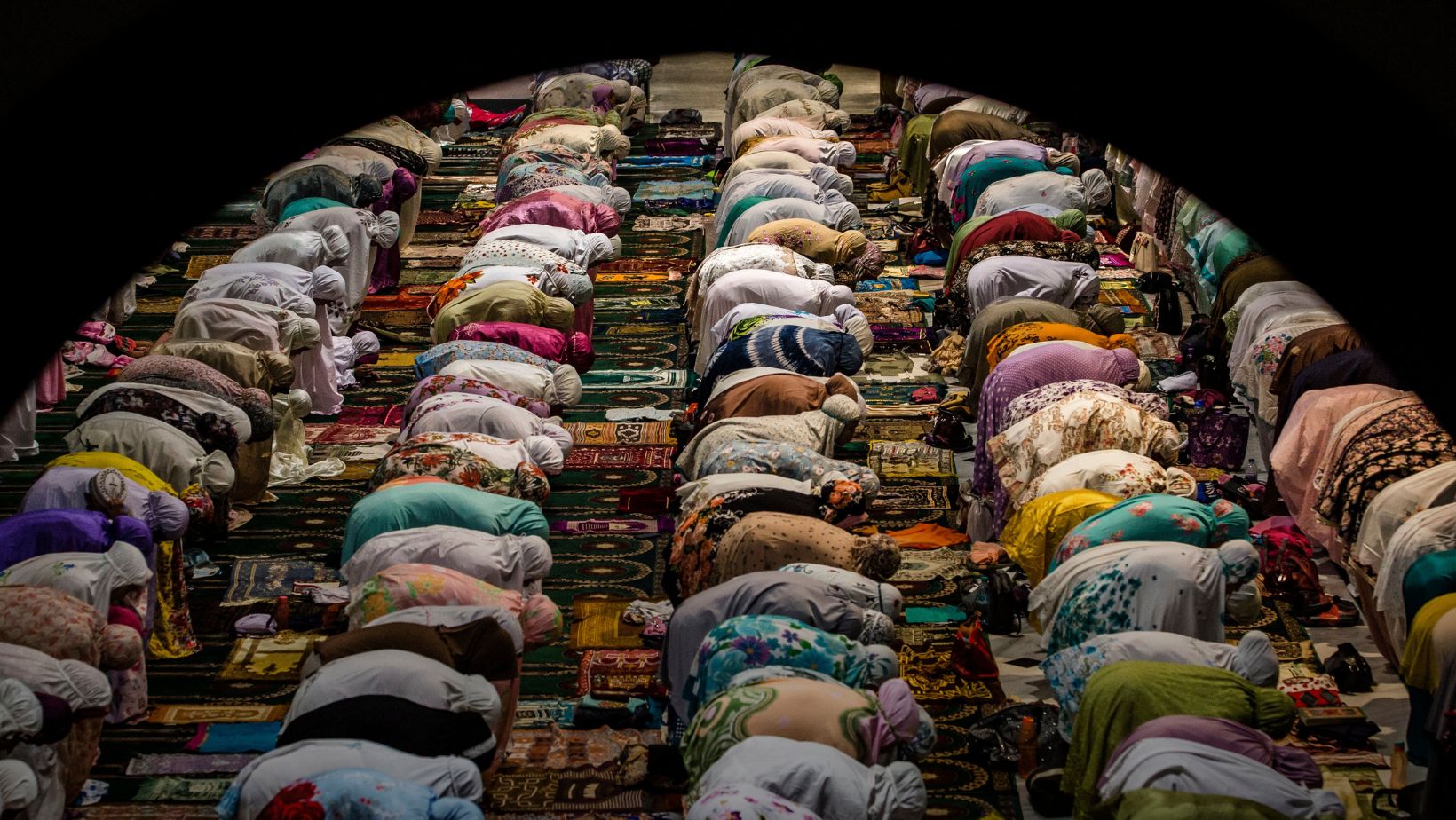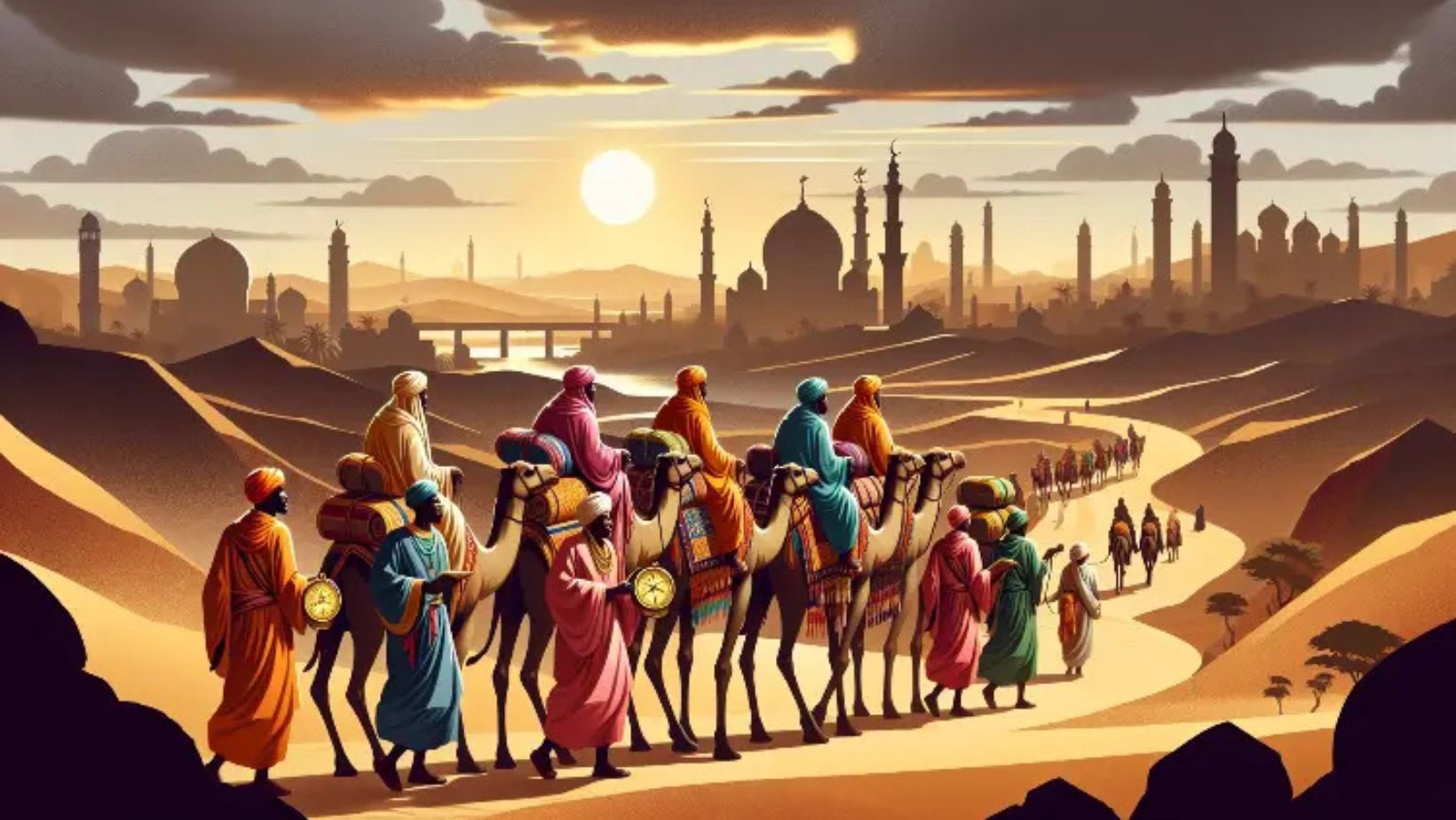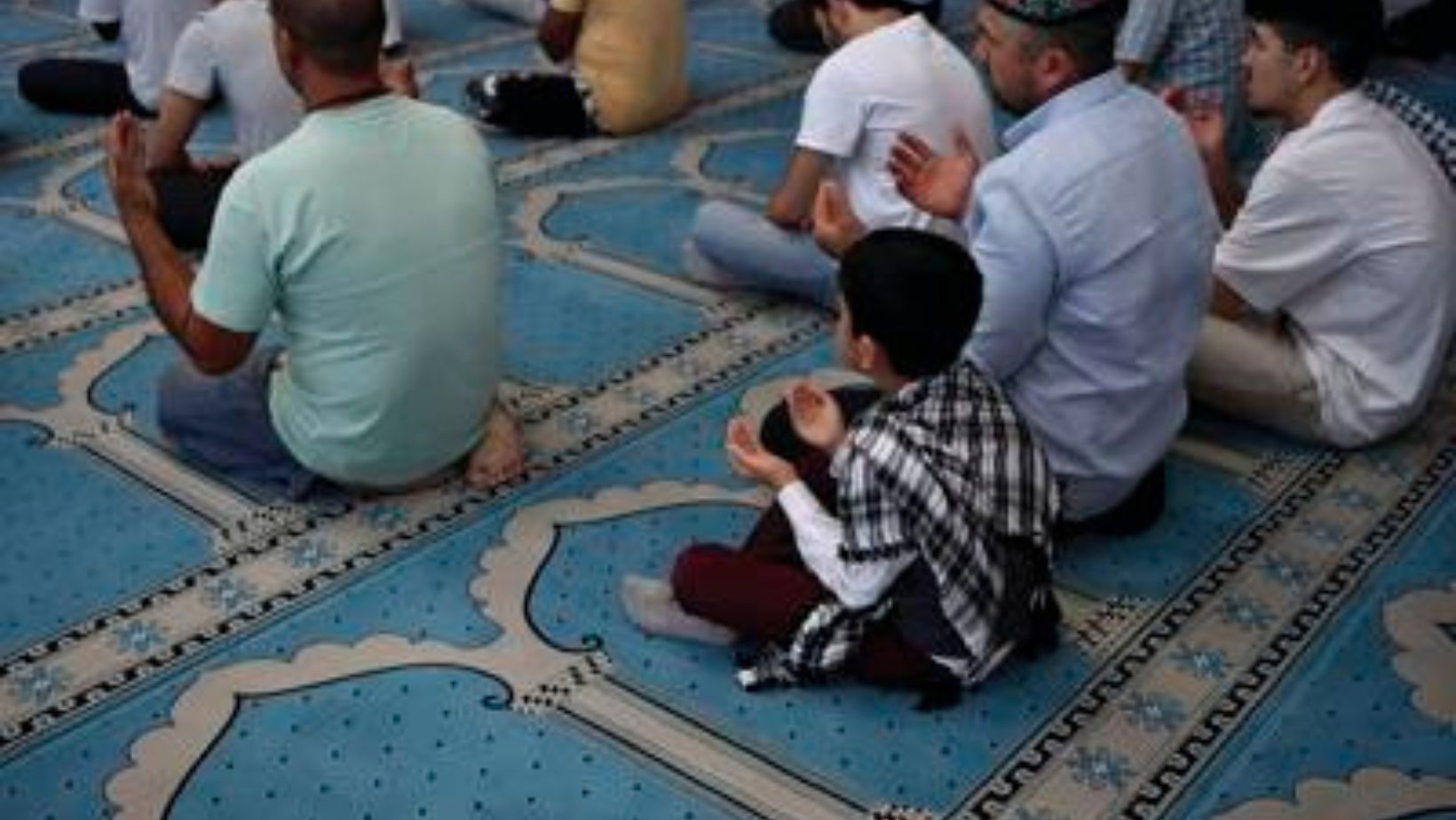Islam’s Global Impact is a story of profound transformation. From its birth in 7th-century Arabia, it has spread across continents, shaping cultures, societies, and histories. Founded by the Prophet Muhammad, Islam quickly became a force that reached far beyond the Arabian Peninsula. Today, with over a billion followers, Islam is one of the world’s largest religions, influencing everything from politics and science to art and architecture. Its teachings on unity, justice, and devotion continue to resonate, impacting diverse societies across the globe. Join us as we explore how Spread of Islam reach has left an indelible mark on the world.
The Birth of Islam in 7th Century Arabia: Spread of Islam

Islam began in the early 7th century in the Arabian Peninsula. It was founded by Prophet Muhammad, who is considered the last prophet in Islam. Muhammad received revelations from Allah (God) through the angel Jibril (Gabriel) over 23 years. These revelations were later compiled into the Qur’an, the holy book of Islam.
Mecca, Muhammad’s birthplace, was a significant city during this time. It was a religious center, home to the Kaaba, a sacred shrine. In 610 CE, Muhammad began preaching in Mecca, calling people to worship one God. His teachings faced opposition from local leaders, leading to his migration to Medina in 622 CE, known as the Hijra.
Medina became the center of the Muslim community, where Muhammad established a social and political order based on Islamic principles. The significance of Mecca and Medina is profound in Islam. Mecca is home to the Kaaba and is the destination for the Hajj pilgrimage, while Medina is where the Prophet is buried and where the Muslim community first thrived. These cities hold deep religious meaning for Muslims worldwide.
The Early Expansion: From the Arabian Peninsula
After the death of the Prophet Muhammad in 632 CE, the first caliphs rapidly expanded Islam beyond the Arabian Peninsula. Under the leadership of the Rashidun caliphs, Muslim armies conquered vast territories. The expansion began with the neighboring regions of the Byzantine and Sassanian empires. Within a few decades, Islam spread through the Middle East, North Africa, and parts of Europe.
The first caliph, Abu Bakr, focused on consolidating power within Arabia and uniting the tribes. After his death, Umar ibn al-Khattab became the second caliph and led military campaigns that brought Syria, Iraq, and Persia under Muslim rule. By 651, the Sassanian Empire had fallen, and the Byzantine Empire lost significant territories in the Levant. These early conquests laid the foundation for the spread of Islam to new regions.
Islam’s success was not only due to military victories but also the appeal of its teachings. The caliphs encouraged religious tolerance and administrative efficiency, which helped win the loyalty of conquered peoples. The rapid expansion of Islam transformed the cultural and political landscape of the ancient world.
The Role of the Caliphates in Islamic Growth: Spread of Islam
The Caliphates played a pivotal role in the rapid expansion of Islam, shaping its political, military, and cultural development. The Rashidun Caliphate (632–661 CE) was the first to lead after Prophet Muhammad’s death. Under the leadership of the first four caliphs, Islam expanded across the Arabian Peninsula and beyond. Military campaigns, such as the conquests of the Byzantine and Sassanian Empires, were essential to this growth.
The Umayyad Caliphate (661–750 CE) further expanded the Islamic Empire, stretching from Spain to India. They centralized political power and established Arabic as the language of administration. This facilitated trade, communication, and cultural exchange across vast regions. The Umayyads also encouraged the spread of Islam by integrating conquered people into the empire’s structure.
The Abbasid Caliphate (750–1258 CE) marked the Golden Age of Islam. Their capital, Baghdad, became a hub of learning, culture, and intellectual achievement. The Abbasids advanced sciences, philosophy, and the arts, laying the groundwork for future Islamic civilizations. They played a crucial role in preserving and transmitting knowledge, making significant contributions to both Islamic and global history.
Islamic Golden Age: A Time of Knowledge and Innovation
The Islamic Golden Age, spanning from the 8th to the 14th centuries, marked a period of remarkable advancements in science, medicine, and philosophy. During the Abbasid Caliphate, scholars made groundbreaking contributions in various fields. They built upon and enhanced classical Greek, Roman, Persian, and Indian knowledge, preserving ancient texts and translating them into Arabic. This effort not only saved important works from antiquity but also laid the foundation for future scientific developments.
In medicine, figures like Avicenna (Ibn Sina) and Al-Razi made significant strides. Avicenna’s Canon of Medicine became a crucial medical reference in both the Islamic world and Europe for centuries. The advancements in optics, algebra, and astronomy during this era also had a lasting influence. Scholars like Alhazen and Al-Khwarizmi made discoveries that are still referenced in modern science and mathematics.
Philosophical thought during this time integrated Greek philosophy with Islamic teachings, fostering intellectual debates and developments. The preservation and enhancement of classical knowledge by Islamic scholars helped set the stage for the European Renaissance. This era was not just about preserving knowledge but also about expanding it, creating a lasting legacy of intellectual achievement.
Islam’s Cultural Influence on Art and Architecture: Spread of Islam
Islamic art and architecture have had a profound impact on the cultural landscape throughout history. The development of these forms reflects the religion’s values, focusing on spirituality and the use of abstract design. Islamic art is known for its intricate geometric patterns, arabesques, and calligraphy, which avoid depictions of living beings due to religious principles. Calligraphy, especially of the Quranic verses, became a central element in Islamic art, adorning buildings, manuscripts, and objects.
Islamic architecture is also defined by its unique features, including expansive courtyards, intricate tile work, and grand domes. Iconic structures, such as the Dome of the Rock in Jerusalem, showcase the rich design traditions of early Islamic architecture. Its golden dome and intricate mosaics reflect the merging of Byzantine and Persian influences. The Alhambra in Spain stands as another masterpiece, with its stunning courtyards, delicate stucco carvings, and water features creating a sense of paradise on Earth.
These architectural marvels are not only symbols of Islamic culture but also represent a blending of regional styles and a commitment to beauty and serenity. Islamic art and architecture continue to inspire modern designs, leaving a lasting legacy across the world.
Islam in Africa: Trade, Conversion, and Legacy

Islam spread across Africa primarily through trade routes. Merchants, scholars, and travelers carried Islamic teachings as they traded goods such as gold, salt, and ivory. The movement of people along the Trans-Saharan trade routes played a key role in introducing Islam to North and West Africa. As trade flourished, Islam reached regions like Mali, Ghana, and Songhai, where it blended with local traditions.
The conversion to Islam was gradual and often linked to political and social benefits. African rulers adopted Islam to strengthen their ties with Muslim traders and to enhance their authority. This led to the rise of Islamic empires, such as the Mali Empire, where Islam became central to governance and law. Over time, Islamic culture influenced African art, architecture, and education.
Islam also shaped African societies by promoting literacy through the Arabic language. Islamic scholars established madrasas, fostering a rich tradition of learning. African societies integrated Islamic practices while maintaining traditional beliefs, creating a unique cultural fusion. The legacy of Islam in Africa remains evident in the region’s religious practices, languages, and customs today.
The Spread of Islam into Europe: Conquests and Cultural Exchange
The spread of Islam into Europe began with the early Muslim conquests in the 8th century. The Umayyad Caliphate expanded rapidly, taking control of large parts of Spain and Sicily. In 711 AD, the Battle of Guadalete led to the fall of the Visigothic Kingdom in Spain, marking the start of Muslim rule there. By the 9th century, much of the Iberian Peninsula was under Islamic control, a period known as Al-Andalus.
The cultural exchange between Muslims and Europeans during this period was profound. Islamic scholars preserved and expanded upon Greek and Roman knowledge, especially in fields like mathematics, astronomy, and medicine. This knowledge reached Europe through interactions in places like Spain, where Christian and Muslim scholars engaged with each other. The transfer of knowledge from the Islamic world helped lay the groundwork for the European Renaissance centuries later.
Islamic scholarship deeply impacted European thought during the Renaissance. Translations of Arabic texts into Latin opened new intellectual horizons for European scholars. This exchange of knowledge contributed to advancements in science, philosophy, and art. The influence of Islamic culture and scholarship was crucial in shaping the course of European intellectual history.
Islam and the Indian Subcontinent: A Complex Legacy of Spread of Islam
Islam entered the Indian subcontinent through trade and conquest, beginning as early as the 7th century. Traders from the Arabian Peninsula brought Islamic ideas, while invasions by Muslim rulers from Central Asia, such as Mahmud of Ghazni and Muhammad Ghuri, expanded its presence. The establishment of Delhi Sultanate in 1206 marked a significant political shift, with Muslim rulers controlling large parts of northern India. Over time, Islam began to influence local culture, art, and governance.
The Mughal Empire, which began in the early 16th century, played a pivotal role in the spread of Islam across India. Under rulers like Akbar, Jahangir, and Shah Jahan, the Mughals promoted religious tolerance, but also encouraged the expansion of Islam through state support and patronage. The Mughal court embraced Islamic art, architecture, and culture, creating a lasting legacy. By the 17th century, a large part of the population had converted to Islam, particularly in the northern and western regions of the subcontinent.
Islam’s presence in India is deeply intertwined with its political, cultural, and social history. While it was initially spread by rulers and invaders, over time it became an integral part of India’s diverse religious fabric.
The Role of Sufism in Islam’s Global Reach: Spread of Islam
Sufism, or Islamic mysticism, has played a significant role in the spread of Islam worldwide. Its emphasis on inner spirituality, devotion, and the pursuit of a personal connection with God attracted many people across diverse cultures. Sufis focused on practical applications of faith, such as love, humility, and service to others, making Islam more accessible to various communities. This approach helped establish Islam in regions beyond the Arabian Peninsula.
Sufi orders, or Tariqas, have been key in expanding Islam. These religious groups were organized around spiritual leaders, or sheikhs, who guided followers on the mystical path. They established monasteries, or Khanqahs, where teachings were shared, and communities formed around their teachings. Through these orders, Sufism reached places like West Africa, Southeast Asia, and Central Asia.
The cultural impact of Sufism is undeniable. Sufi practices influenced art, music, and literature, creating a rich legacy in many regions. The famous whirling dervishes, mystical poetry of Rumi, and unique forms of Islamic music, such as Qawwali, are just a few examples of how Sufism shaped local cultures while spreading the Islamic faith.
Islam in Southeast Asia: A Peaceful Spread of Islam
Islam spread across Southeast Asia largely through peaceful means, with traders and missionaries playing key roles. Traders from the Arabian Peninsula, India, and Persia brought Islam to the region as part of their commerce and maritime activities. They established connections with local communities, particularly along the coastlines of Malaysia and Indonesia, where ports were key centers of trade. Along with goods, they introduced Islamic beliefs, practices, and culture, influencing local populations over time.
Missionaries also had a significant impact on the spread of Islam. Sufi missionaries, in particular, were instrumental in converting many Southeast Asians due to their emphasis on mysticism, tolerance, and social integration. They adopted local customs and languages, making Islam more accessible and relatable to native populations. The combination of trade and missionary activity allowed Islam to spread without conflict, establishing a strong presence in the region.
As Islam grew in Southeast Asia, several Islamic sultanates emerged, particularly in Indonesia and Malaysia. The Sultanate of Malacca, established in the 15th century, became a major center for Islamic culture and governance. These sultanates played a crucial role in consolidating Islam in the region, with their leaders encouraging conversion and promoting Islamic education.
Challenges and Modern-Day Islam: Spread of Islam

The impact of colonialism on Islam was profound and continues to shape the Muslim world. During the colonial era, many Islamic countries faced territorial divisions and political upheavals. Western powers imposed borders, disrupting long-standing cultural and religious connections. These changes led to a loss of sovereignty and a complex relationship with the West.
In the modern world, Islam faces challenges such as extremism, misrepresentation, and socio-political struggles. Media often portrays the religion negatively, which can lead to misconceptions. Meanwhile, many Muslim-majority countries struggle with issues like poverty, education, and governance. These challenges affect both the practice of Islam and its global image.
Islam’s role in global politics is significant today. It influences political movements, especially in the Middle East, Africa, and Southeast Asia. Muslim-majority countries often shape international policies regarding peace, security, and economic cooperation. The rise of Islamic political movements, such as in Turkey and Iran, has redefined Islam’s role in modern geopolitics.
Conclusion: Spread of Islam
In conclusion, Islam’s influence on the world is profound and enduring. From its rich history of scientific, philosophical, and artistic advancements to its modern impact on politics, culture, and global dialogue, Islam continues to shape societies worldwide. The religion’s teachings, emphasis on knowledge, and contributions to various fields have left an indelible mark on civilization. Today, Islam remains a driving force in shaping global discourse on social justice, governance, and interfaith relations. Its lasting legacy is felt across diverse communities, demonstrating the religion’s deep and ongoing influence in both the past and present.
FAQs
How did the early Islamic community expand so rapidly?
The rapid expansion of the Islamic community can be attributed to a combination of military conquests, strategic alliances, and the appeal of Islam’s message. After the death of Prophet Muhammad, the Rashidun Caliphate quickly conquered vast regions in the Middle East, North Africa, and parts of Europe, spreading Islam as both a religious and political force.
What role did trade routes play in the spread of Islam?
Trade routes, particularly across the Arabian Peninsula, Africa, and into Asia and Europe, were essential in spreading Islam. Merchants, scholars, and travelers carried not only goods but also ideas. Islam’s message spread across these routes, particularly as it offered a unifying religious framework for diverse peoples.
How did Islamic empires contribute to cultural and scientific advancements?
The Islamic Golden Age (8th to 13th centuries) saw remarkable advancements in science, mathematics, medicine, and philosophy. Scholars in the Abbasid Caliphate, for example, preserved ancient Greek texts and expanded on them, making significant contributions to algebra, astronomy, and medicine, which laid the foundations for later European developments.
What factors led to the eventual division of Islam into Sunni and Shia branches?
The division of Islam into Sunni and Shia branches originated from a dispute over the rightful successor to Prophet Muhammad. Sunnis believed that the community should select the leader (caliph), while Shias argued that leadership should stay within the Prophet’s family, specifically with Ali, Muhammad’s cousin and son-in-law. This split has continued to influence the political and religious dynamics of the Muslim world.
How did Islamic art and architecture reflect the values of the religion?
Islamic art and architecture are marked by intricate geometric patterns, calligraphy, and aniconism (avoidance of depicting human or animal figures), reflecting the religious emphasis on the unity and transcendence of God. Architectural wonders like mosques and madrasas, with their towering minarets and grand domes, were designed not only for practical use but to symbolize the presence of the divine in everyday life.

